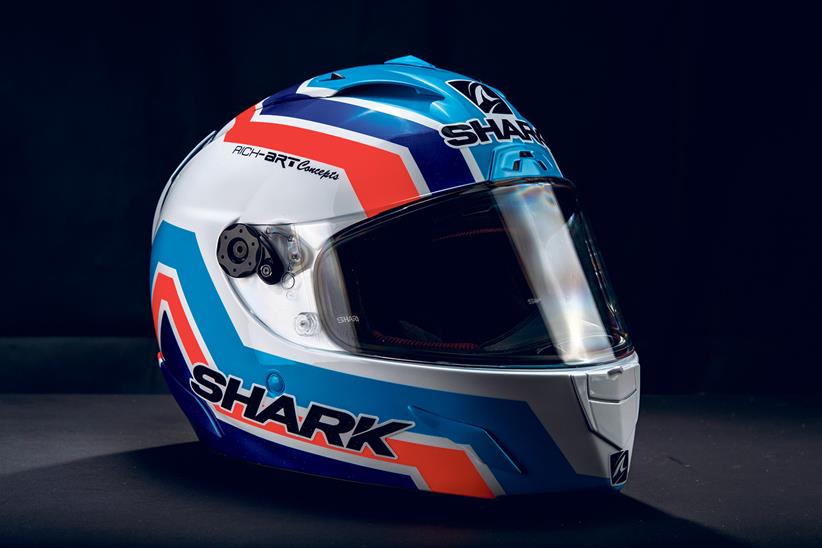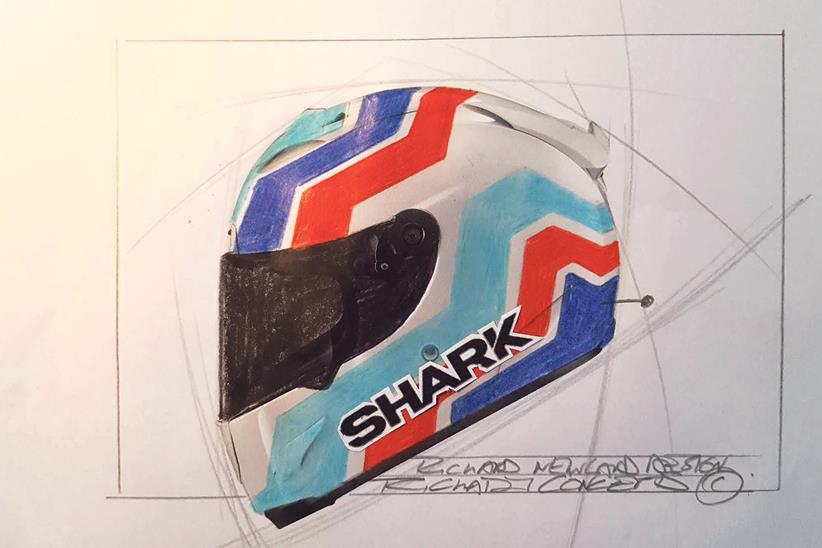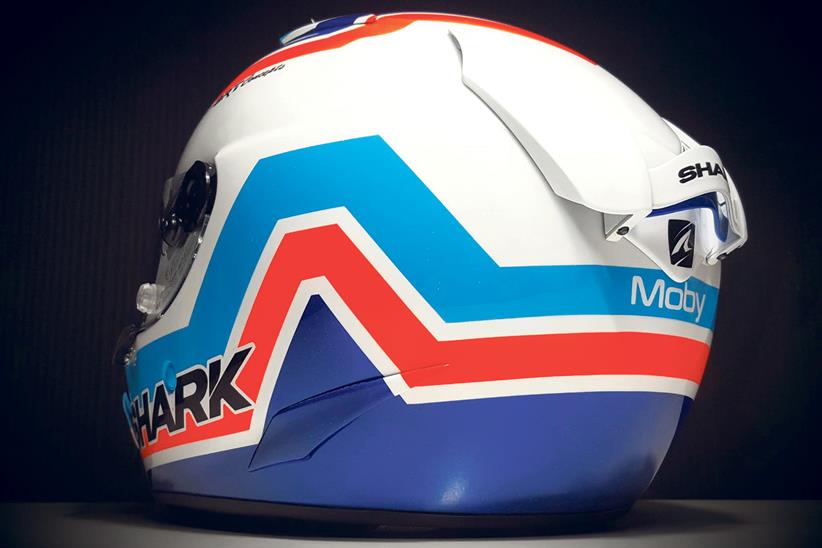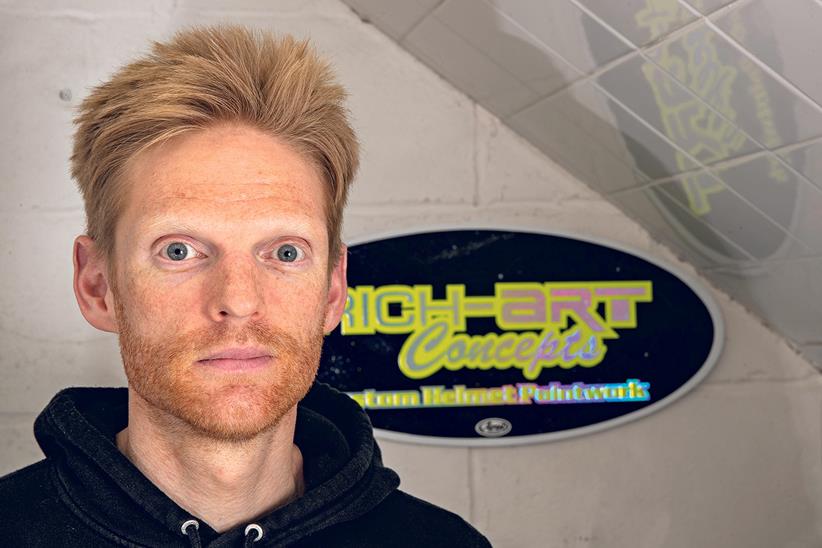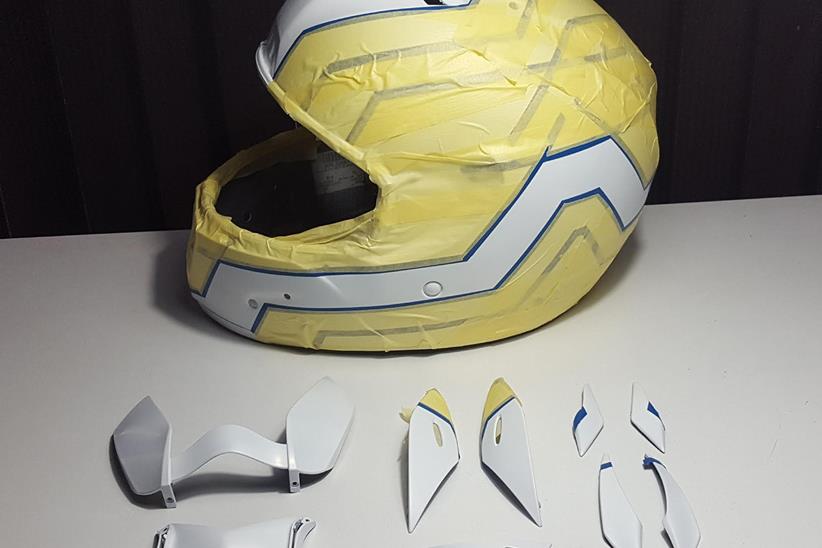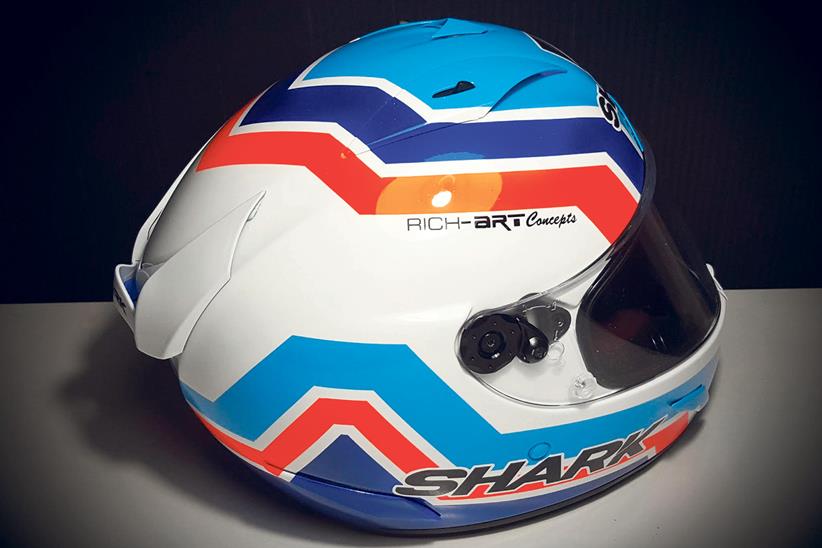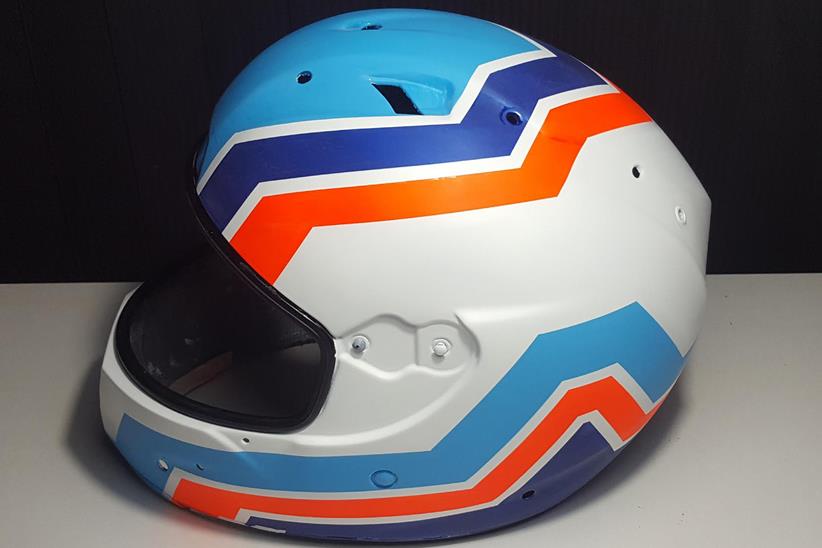Now is the time to design your own helmet
Hello. My name is Richard, and I’m a shameless hypocrite. OK, so this isn’t group therapy, but I felt it would be wrong not to share with the group that this rampant self-indulgence is spectacularly contrary to everything I’ve ever spouted before about personalised helmet paintjobs.
Despite being offered this service on numerous occasions over the last 20-odd years, I’ve always declined, while mumbling something worthy, but sincere, about only wanting to wear what any human could walk into a shop and buy.
Don’t get me wrong, it’s not that I dislike personal paintjobs on helmets, it’s just that I’ve always been a bit too self-conscious to want to stand out from the crowd.
Related articles on MCN
- MCN goes racing with Freetech Endurance
- Michael Laverty’s riding academy is developing the British stars of the future
- Go motorcycle racing on a budget with the MZ Cup
What’s changed? Well, nothing. I still feel oddly conspicuous when wearing ‘my’ helmet – but I love it. What’s really surprised me is other peoples’ reaction to it – and how often the conversation opener is: ‘Is that your own design, mate? I’ve not seen that one on the shelves.’
I spend a lot of time looking at helmet ranges, but I’m surprised by how many other bikers clearly do, too.
Air brush legend
![]()
If you’re going to take the plunge, you’ve got to do it properly. It’s no use taking a valuable item of critical safety equipment and entrusting it to Dave down the Dog & Duck, because he once sprayed your wife’s brother’s kid’s best friend’s BMX with a rattle can and didn’t do a half-bad job of it. This is specialist territory.
There are several great helmet artists out there – but one of the very best, most prolific, and lovely to work with is Richard Stevens, the airbrush legend better known as Rich-Art Concepts.
Rich founded the business almost by accident when recovering from a broken leg sustained while racing motocross at national level – but nothing that’s happened since has been accidental.
His dedication to this 3D craft has seen him design and paint helmets for biking’s biggest stars. And nowadays Rich is also one of the go-to artists for our four-wheeled friends, too. But despite his talent, glittering client list, and a frenetic work schedule – Rich manages to make the process almost as enjoyable as owning the finished product.
![]()
When vision meets talent
I have all the design ability of a block of concrete and a box of crayons. Pop those two things next to one another and you’ll be waiting a long time before the genius flows. But as the old saying goes, ‘I know what I like’.
And this is where working with a pro is invaluable. Yes, you can be utterly dictatorial about what you want – but you wouldn’t buy a dog and then bark at the postman yourself, would you? Rich’s talent and experience is invaluable, so use it to get results.
“Where do we start?” I ask. Rich replies: “Do you have any ideas already about what you like, or any elements that you would like to include? Are there certain colours you’d like me to use to create the design?” At this point I was already both floundering and forming a clear picture simultaneously.
![]()
I really like bold and simple in terms of colour and design. I’m really not into flames, fancy artwork, cartoon dogs or skulls and crossbones, tribal stuff or anything overly complicated. Bold geometric is more my thing.
So I started creating a huge file of every helmet design I’ve ever liked elements of, and setting a clear colour palette.
I’ve always adored the bold simplicity and brightness of the Gulf colours Porsche used on their 917 race cars from 1970, and that was the first thing that leapt to my mind. Oddly, that paintjob always looks awful on motorcycles, and I didn’t want a pastiche – but I wanted to include the colours – along with a deeper blue.
So I sent Rich my file of helmet inspiration images and colour palette – then set him free to create something that met my stylistic restrictions, would work with the shape of my new Shark Race-R Pro, and would use the colours in a way that was bold, without being solid and heavy.
![]()
The wait while Rich put pencil to paper was agonising. What if I hated it – but couldn’t think of a way to do it better?
When the email landed with his first design sketch, I didn’t open it for an hour for fear of disappointment. But I needn’t have worried. When I did take a peak I loved it. Rich had imagined what I couldn’t have articulated or designed myself. The only change I made was to the font used for my old nickname on the back. That’s it. I wish I’d done it sooner.
A 3D blank canvass
![]()
Rich Stevens, founder of Rich-Art Concepts explains the process further: “There’s usually three sorts of customers, those who know exactly what they want, those who have half an idea, and those have none at all!
“The more simple the design, the more pressure there is on the design to work. They are actually the hardest to do and the ones I lose the most sleep over.
“Riders often tell me they can find a helmet they want, but struggle to find a design they like – so they want to create their own.
“There are so many helmet types now, and shape has an impact on the design. A smooth Arai shape is very different to an angular Shoei, so a design that works on one, might not work on the other. But the diversity is better than it’s ever been, and that’s great because it gives so much more scope to create something completely unique.”
How to paint a custom lid
![]()
Rich Stevens founded Rich-Art in 1999 while recovering from an MX injury. He now designs and paints (by hand) 100-130 helmets per year.
1. Putting pencil to paper After consulting with the client, Rich does all his helmet paint designs by hand on paper. They each take a couple of days to tweak and finalise.
2. Stripped for prepping Vents, visor pods and fittings are removed, and openings masked. Rich can paint any helmet, but starting with plain white is best.
3. Shell preparation The shell is ‘flatted’ using 800-grade paper, the rough design is sketched on and used as a guide for final masking.
4. Painting begins Painting usually starts with the lightest colours first. Rich uses Iwata airbrushes and builds up layers in House of Kolor paint, sometimes with lacquer inter-coats. There can be up to 20 coats in total.
5. Devil’s in the detail Super-fine detailing and subtle shadows are the final touches added, to give each helmet the superb depth and quality Rich-Art is famous for.
6. The finished article Design complete, Rich applies 6-8 coats of high- quality lacquer before final flatting and hand polishing. Typical cost? Around £700.
Now it’s your turn
Want the ultimate helmet paint job? Whatever design you have in mind, Rich is the man to translate it onto your chosen lid. See more and get in touch via www.richartconcepts.co.uk
